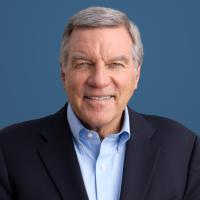'Temple in Waiting' Prepared in Jerusalem
The Temple Mount in Jerusalem is one of the most sacred places on earth, and one of the most contested.
For Jews, it's the place where the Holy Temple once stood.
Today Muslims control the Temple Mount and Jews are forbidden to worhip there. But that hasn't stopped some people from making plans to build the next temple.
Everyday, three times a day, Jews recite this prayer: "May it be your will that the temple be speedily rebuilt in our own time."
It's a prayer they've prayed for almost 2,000 years. But today, Jews here in Jerusalem are doing more than just praying.
Just a few steps away from the western wall, rabbis and craftsmen are building what they call a "temple in waiting."
Chaim Richman is a director at the Temple Institute in Jerusalem.
"The Temple Institute is actively engaged in the research and preparation of the resumption of service in the holy temple to the extent of actually preparing operational blueprints for the construction of the temple according to the most modern standards," he said.
This menorah is just one of several vessels being created for the next temple. It's covered with 95 pounds of pure gold and has a price tag of $2 million.
Piece by piece, the third temple is taking shape, with priest's garments, vessels of copper, gold, and silver, and a new generation of levite priests specially trained for temple service.
"We have enough in place now to resume divine service and to build the temple," Richman said. "But obviously, a lot of things have to happen in order for this to happen."
Richman isn't the only one who's ready to rebuild.
Some 3,000 years after King Solomon built the first Jewish temple, another Solomon is laying the foundations for the third one.
Gershon Solomon leads a group called The Temple Mount Faithful.
"From the womb of my mother, I have a task and a mission in my life, which is connected with the rebirth of Israel," he said.
The group commissioned these cornerstones for the third temple. The six-ton stones were consecrated with water from the biblical pool of Siloam and cut with diamonds.
For several years, Solomon and his followers tried to place the stones on the Temple Mount, and every year they were stopped by Israeli police.
"Unfortunately, weakness of the Israeli leadership did not allow us to bring the cornerstones to the right place," Solomon said. "The end-time temple should be built on the same location as the first and the second temple."
But that location is already occupied. The holiest site for Jews is also the third holiest site for Muslims.
"The issue of the Temple, it's so sensitive," Yousef Natsheh of the Palestnian Antiquities Authority explained. "It's not an undeniable fact; it's theories. The political situation, the misunderstanding, the mistrust distorted all the facts.
Muslim law forbids archaeologists from digging on the Temple Mount, so instead, Gabriel Barkay is digging through its trash.
"We have here the entire history of the Temple Mount," he said.
He and his team are sifting through truckloads of debris, unearthed by bulldozers and discarded by Muslim authorities.
Among their finds: an arrowhead from the Nabylonian invasion in 586 B.C. and a 2,400-year-old coin, the oldest ever minted in Jerusalem.
"A beautiful piece, tiny silver piece with an owl and the Hebrew inscription 'Yehud' which is the Aramaic name of Judea," Barkay said.
Some of the most dramatic traces of temple life have been unearthed here at the western wall.
On the walls, you can still see the marks from the fires that destroyed the temple in 70 A.D. Overturned stones are still lying where they were thrown from the top of the Temple Mount by the armies of Rome.
On one stone is a Hebrew inscription: "To the place of trumpeting."
Even more intriguing is the part of the western wall that's still underground.
Dan Bahat spent 40 years excavating the tunnels around the Temple Mount, and he says the most compelling case for the temple is yet to be discovered.
"I believe that behind this stone is a large arch which forms a storehouse, which stored all the treasures of the temple," he said. "In the future, when it will be possible to dig, maybe we'll get to there."
But Bahat's interest in the temple is strictly in its past, not in its future.
"There is no chance whatsoever for the third temple. The third temple will be when the Messiah comes," he said. "Both Jews and Christians are waiting for him so when he comes, let us see what happens. It won't happen before."
*Original Broadcast Date: September 25, 2009.
*Originally aired October 17, 2008.

